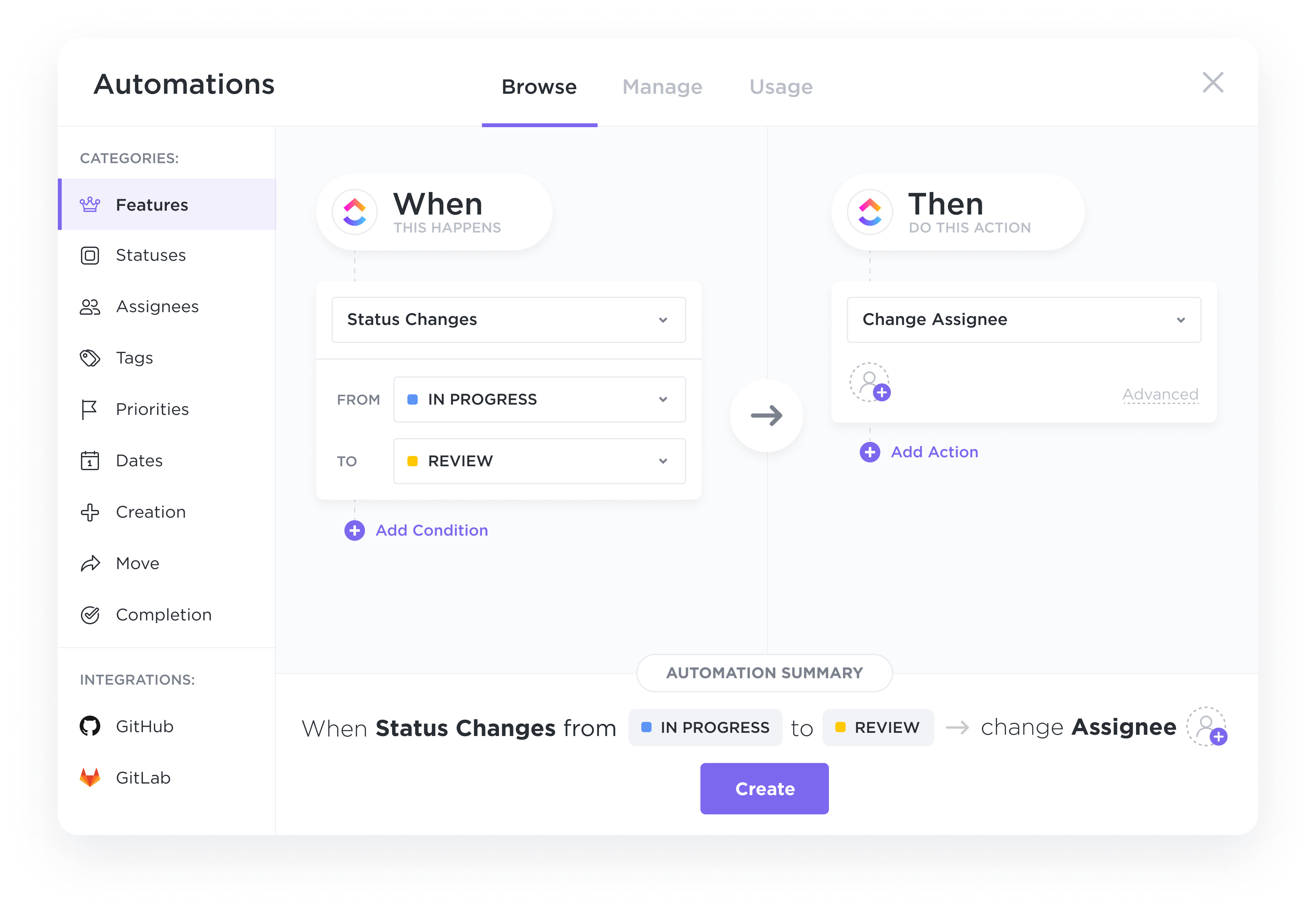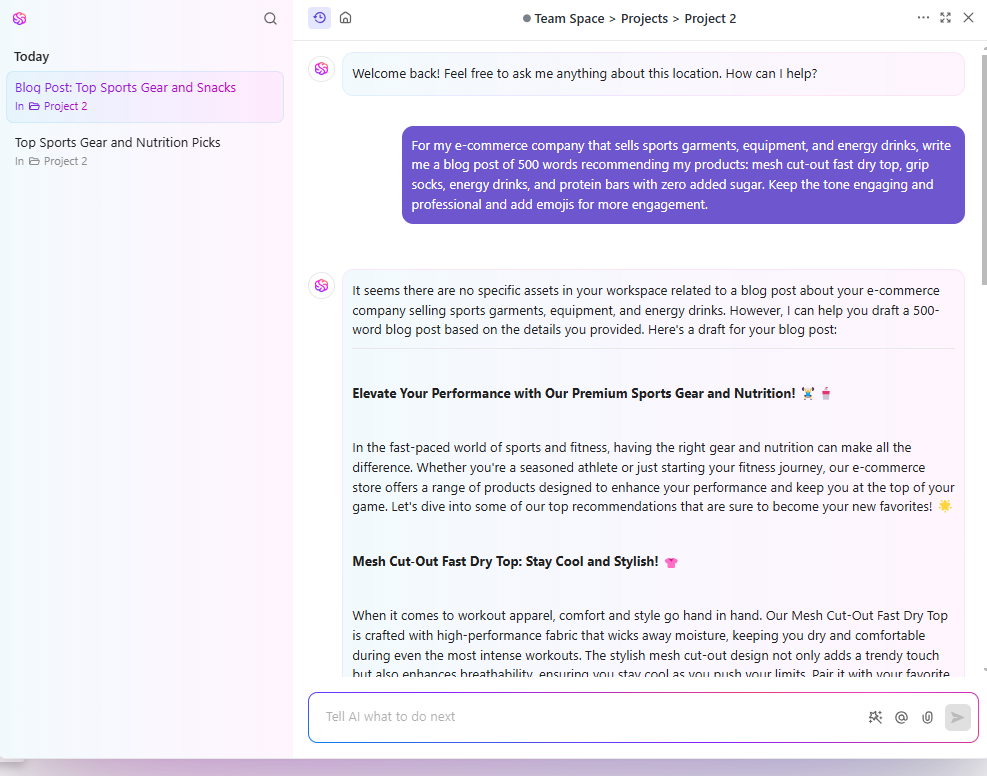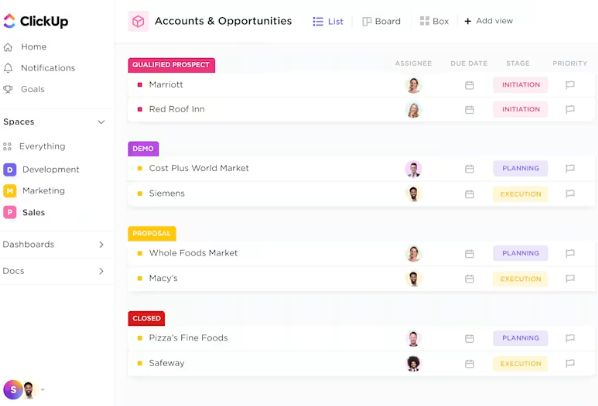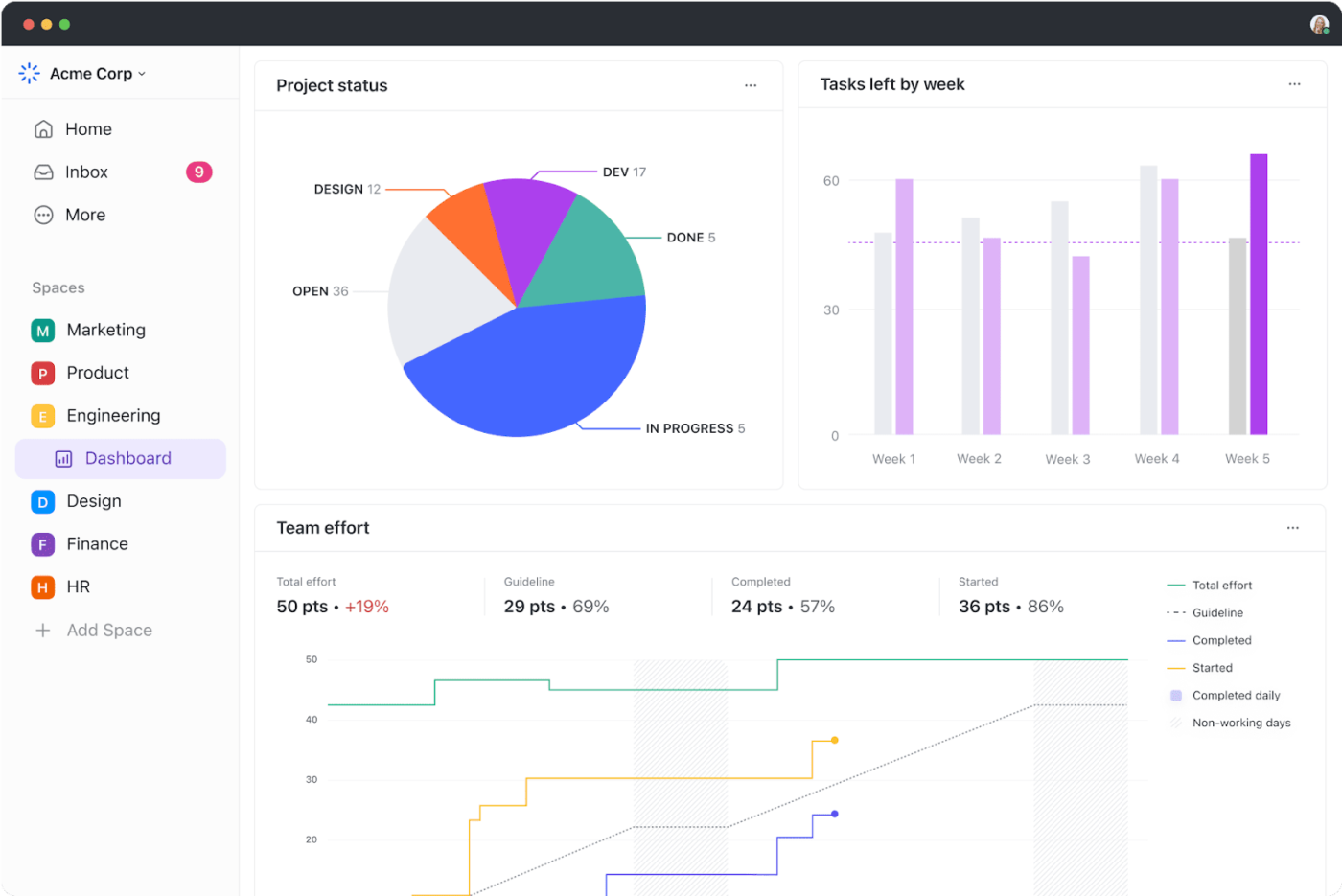CRM Advertising: Benefits, Strategies, and How It Works

Sorry, there were no results found for “”
Sorry, there were no results found for “”
Sorry, there were no results found for “”

Can you imagine running ad campaigns without truly knowing your audience? It’s almost like shooting in the dark. That’s where CRM advertising changes the game.
Using customer relationship management (CRM) software, businesses can create targeted marketing campaigns. This helps them reach the right people at the right time.
74% of businesses say the right customer relationship management software improves access to customer data, helping them understand their audience and boost sales.
But without the right CRM tools, you risk:
Not to worry!
In this blog, we’ll explore CRM advertising—its benefits, strategies, best practices, and how it boosts customer engagement and ROI.
CRM advertising is the use of customer relationship management (CRM) data to create personalized, highly targeted ad campaigns. Ever wonder how some ads feel like they’re speaking directly to you? That’s CRM advertising in action!
Integrating CRM systems with ad platforms like Google Ads, Facebook, and Instagram helps businesses. They can create targeted CRM campaigns to individual customers. This is based on purchase history, demographics, and engagement patterns.
This approach allows you to send relevant messages to the right audience, increasing engagement and boosting ROI. For example, if your CRM shows a customer who regularly buys running shoes but hasn’t made a purchase recently, you can trigger a personalized ad offering a discount on new running gear. This targeted strategy helps reignite customer interest, leading to better retention and higher sales.
➡️ Read More: What is a CRM Process? Essential Steps to Craft Your Own
When you use CRM advertising, you’re not just running ads. You’re creating data-driven marketing campaigns that improve customer engagement and client retention.
In this way, it is necessary for you to observe the following principal features of CRM advertising to foster success:
➡️ Read More: CRM Strategy: CRM Strategies to Manage Your Business
With CRM advertising, your business doesn’t just compete—it dominates, turning targeted campaigns into conversions, loyal customers, and explosive growth!
Here are some key benefits of CRM advertising for your business:
🔍 Did You Know? Acquiring a new customer can cost 5 to 25 times more than retaining an existing one! Remember, customer retention is key for long-term business success and profitability.
To make CRM advertising truly effective, it’s about using your customer insights to create meaningful, personalized campaigns.
Here’s how to make CRM advertising work for you:
Not everyone is the same, right? So, use your CRM data to break down your customer base. Figure out who’s buying what, how often they interact with your brand, and what interests them. This helps you tailor your messages to each group.
Example: If you sell fitness gear, segment your audience into runners, weightlifters, and yoga enthusiasts to serve them ads featuring relevant products.
Turn customer data into social ad magic on Facebook, Instagram, and LinkedIn! Use retargeting ads to nudge past customers who visited your site but didn’t convert.
Example: If a customer browses winter coats on your site but doesn’t buy, show them a Facebook ad with a limited-time discount on the exact coat they viewed.
💡 Bonus Tip: Check out what is a collaborative CRM along with its features, benefits, and examples, and explore how shared data improves communication and boosts customer relationships!
Reconnect with inactive customers by sending targeted “We Miss You” emails. Remind them about items in their abandoned cart or wishlist, and don’t forget a little incentive—a special discount might just do the trick!
Example: If a customer left a pair of sneakers in their cart, send an automated email: Still thinking about these? Here’s 15% off if you complete your purchase today!
Make customers feel valued with special discounts on their birthday, anniversary, or first-time purchase—these little gestures drive customer loyalty and spark more conversions!
Example: Happy Birthday, Sabrina! 🎉 Here’s a 20% discount on your favorite products—just for you!
Increase customer lifetime value by suggesting related or upgraded products based on past purchases. Cross-selling encourages customers to buy complementary items, while upselling promotes higher-end alternatives.
Example: If a customer buys a laptop, send them a personalized ad for a cool case and a wireless mouse. Or maybe tempt them with an upgraded model with even more features.
CRM advertising isn’t a set-it-and-forget-it strategy.
Regularly monitor campaign performance, customer responses, and ad effectiveness using real-time CRM insights. Adjust targeting, tweak messaging, and refine ad placements to improve conversion rates and maximize ROI.
Example: If an ad campaign for premium sunglasses performs better with a discount vs. free shipping, adjust future promotions accordingly.
🔍 Did You Know? The first CRM systems were born in the groovy 1970s! They started out simple, mainly helping sales teams keep track of their contacts and automate some of their work. A long way from the sophisticated systems we have today!
You can’t effectively implement the CRM strategies mentioned above without leveraging technology. You need the right CRM tools to manage customer interactions, track data, and optimize marketing efforts. Without them, your campaigns may fall flat.
Let’s explore how technology takes CRM advertising to the next level.
Customer data is powerful, but only if you know how to use it. CRM analytics allows us to track interactions, order history, and preferences to make smarter decisions.
Predictive analytics enhances your strategy by forecasting customer behavior, allowing your team to anticipate needs and respond proactively.
If a customer buys sunscreen like clockwork every two months, your CRM can anticipate the next purchase and send a friendly reminder email.
Similarly, if analytics reveal a decline in email open rates or purchase frequency, your team can respond with a targeted re-engagement campaign—like offering a limited-time discount or personalized product recommendations.
💡 Pro Tip: Thinking about a CRM upgrade? 🤔 Learning how to successfully implement a CRM system starts with thorough research and careful planning:
A well-executed CRM software setup enhances productivity, customer relationships, and revenue—so plan wisely! 🎯
CRM insights should directly inform your social media targeting and content strategy.
By integrating CRM marketing software with social platforms, you can track and manage customer interactions, analyze engagement trends, and create personalized social media campaigns to win them.
If your CRM shows that some customers mainly use Instagram, you can adjust your content for that platform. Use behind-the-scenes videos, product demos, or user content to connect better.
CRM-driven content marketing helps you create blog posts, emails, and social ads. If your data shows that customers who buy running shoes also pick up sports socks and energy drinks, turn that into a smart content play—like an article or curated bundle that speaks to their active lifestyle.

It’s a win-win—offering valuable content to customers while boosting your cross-selling opportunities!
When it comes to managing your CRM advertising campaigns efficiently, ClickUp stands out as the ultimate all-in-one solution.
As the everything app for work, ClickUp is a powerhouse CRM platform that helps businesses simplify workflows, enhance customer interactions, and boost marketing strategies.
With the ClickUp CRM software, you can manage, automate, and track every aspect of your CRM advertising efforts. Let’s explore how its powerful features can enhance your campaigns and customer management:

ClickUp Tasks lets you have every customer detail, interaction, and deal at your fingertips—organized, trackable, and always up to date. lt structures your entire customer database with linked tasks, documents, and updates.
You can categorize leads based on engagement levels if you run a digital marketing agency. The sales team can effortlessly track interactions, follow-ups, and deal progress by linking tasks to specific customer accounts.
🤓 Friendly Hack: Want to learn how to build a CRM database to serve your customers better? It’s easy with this step-by-step process!

Managing multiple platforms can be challenging, but ClickUp Integrations bring everything under one roof. Whether it’s HubSpot, Gmail, Slack, Dropbox, or Outlook, you can connect and sync your essential CRM tools in seconds.
For instance, an e-commerce business can integrate ClickUp with Gmail to automate responses for abandoned cart emails. By syncing customer emails within ClickUp, the team quickly follows up on potential sales opportunities.

Why waste time on repetitive tasks when ClickUp can do them for you? ClickUp Automations help you assign tasks, trigger status updates, and prioritize deals automatically—so your team can focus on closing, not chasing.
This is a great functionality for a SaaS company to automate its onboarding process. When a new customer signs up, ClickUp automatically assigns a welcome email task, updates their status, and triggers reminders for follow-up engagement.

Data-driven decisions = smarter campaigns.
ClickUp Dashboards provide real-time insights into customer lifetime value, deal sizes, conversion rates, and more using 50+ widgets, helping you optimize every ad dollar.
In this case, a B2B sales team can use it to monitor ad performance. They can track lead conversions, ad ROI, and campaign engagement, then tweak strategies to crush those results!
Along with these core functionalities, ClickUp CRM also helps businesses with:
Plus, with the ClickUp CRM Template, take charge of your entire sales pipeline—from lead to closed deal. It’s your game changer for nurturing leads, qualifying prospects, and building rock-solid client relationships!
➡️ Read More: Free CRM Templates: Excel, Google Sheets, & ClickUp
Want to supercharge your CRM advertising? Follow these best practices to level up your game and turn leads into loyal, high-fiving customers!
A cluttered CRM leads to missed opportunities and wasted time. Regularly update, clean, and segment your database to ensure your team works with accurate, relevant customer data.
Tip: Set up automated workflows to flag duplicate contacts, outdated leads, or missing information.
Repetitive tasks slow you down. Streamline email follow-ups, lead scoring, task assignments, and status updates with ClickUp Automations to keep your CRM running smoothly—without manual effort.
It’s time to make smarter business moves by leveraging a smart CRM tool. Track metrics like conversion rates, ad performance, and customer lifetime value to refine your strategy.
Tip: Use ClickUp Dashboards to spot trends and adjust campaigns in real-time before you lose leads.
Disconnected systems create communication gaps. Integrate your CRM with email, chat, project management, and marketing tools to create a seamless workflow.
Why it matters: Better context = better conversations = higher conversions
Tip: Syncing ClickUp CRM with Gmail and Slack keeps sales and marketing on the same page.
📮 ClickUp Insight: Nearly 42% of knowledge workers prefer email for team communication. But it comes at a cost. Since most emails only reach select teammates, knowledge stays fragmented, hampering collaboration and quick decisions. To improve visibility and accelerate collaboration, leverage an everything app for work like ClickUp, which turns your emails into actionable tasks within seconds!
Not all leads are ready to buy right away. Use email sequences, webinars, and guides to educate and nurture them through the sales funnel. A well-timed case study or testimonial can help hesitant leads take the next step.
Optimizing your CRM advertising is no easy feat. To stay ahead, you need strategic planning, seamless automation, real-time tracking, and data-driven decisions.
Managing leads, nurturing prospects, and analyzing campaigns—while keeping the team on the same page—can be overwhelming.
But with ClickUp, you can drop the chaos. Automate workflows, integrate CRM tools, track customer interactions, and visualize performance—all in one spot.
So why wait? Sign up for ClickUp today and take your CRM advertising to the next level!
© 2025 ClickUp